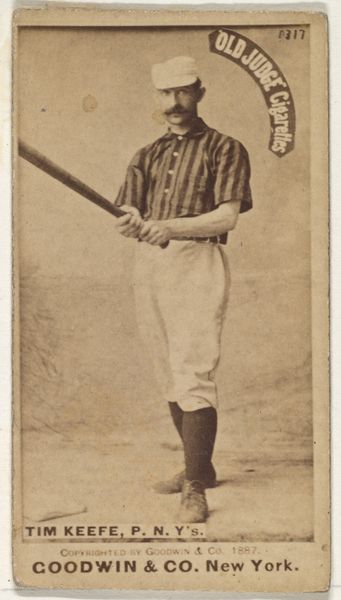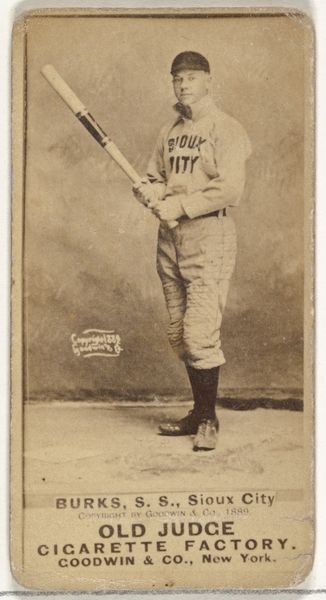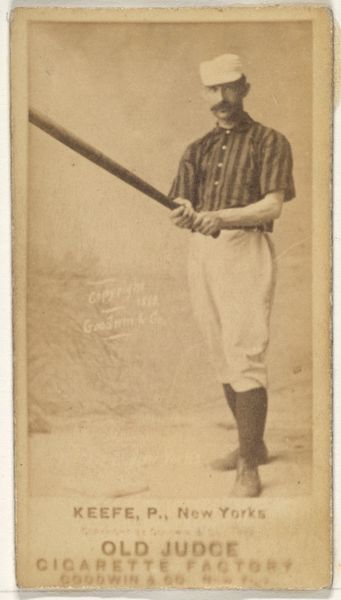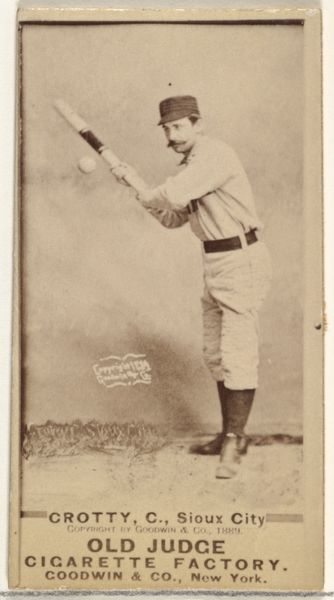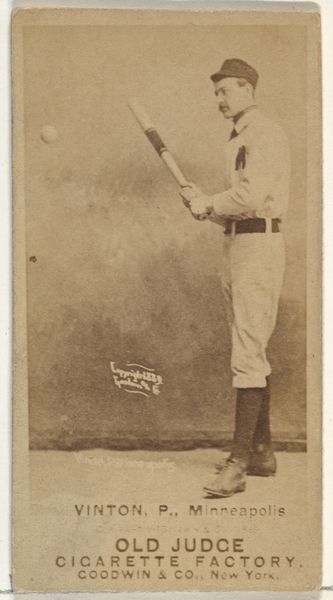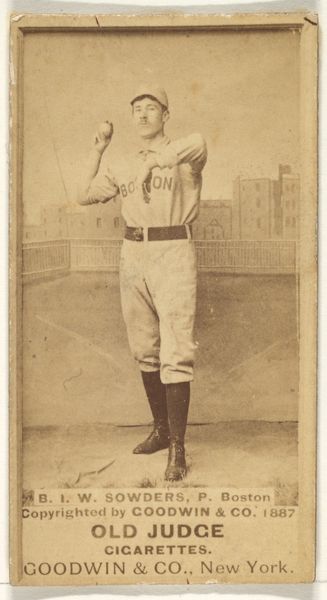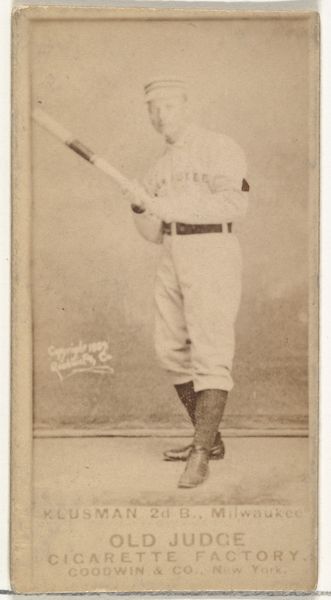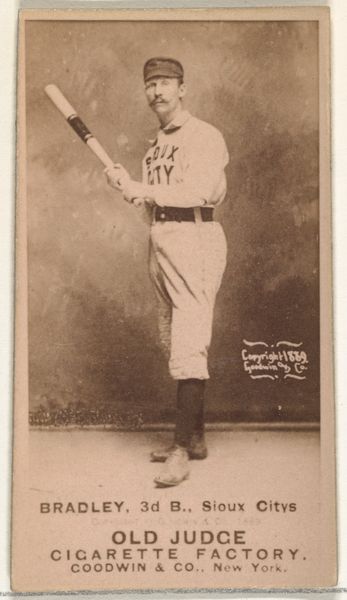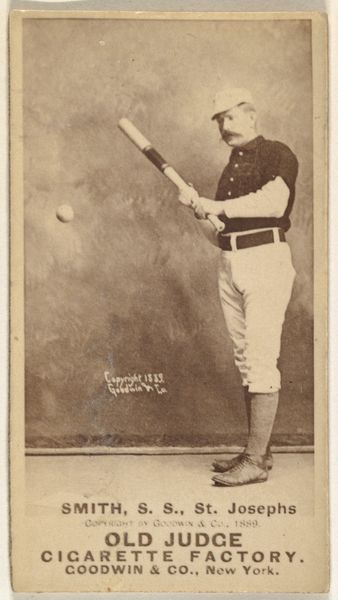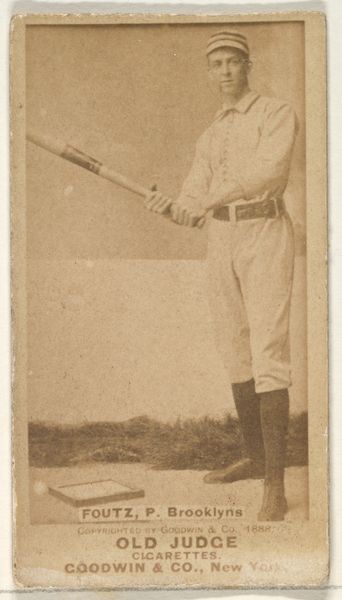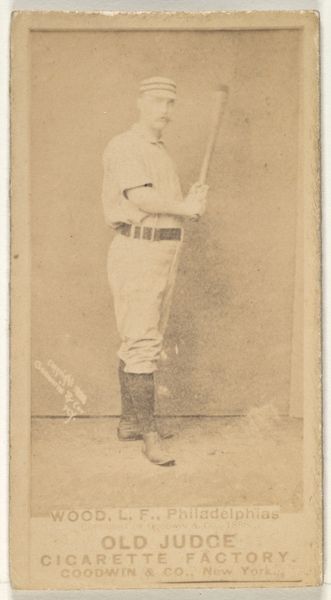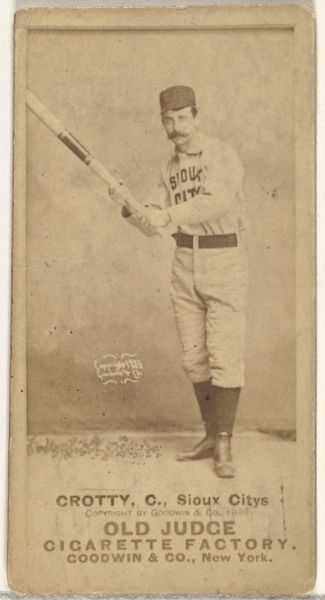
Willard Eben Mains, Pitcher, St. Paul Apostles, from the Old Judge series (N172) for Old Judge Cigarettes 1889
0:00
0:00
drawing, print, photography
#
portrait
#
drawing
# print
#
baseball
#
photography
#
19th century
#
men
#
athlete
Dimensions: sheet: 2 11/16 x 1 3/8 in. (6.9 x 3.5 cm)
Copyright: Public Domain
Curator: The piece before us is a baseball card from 1889, part of the "Old Judge" series produced by Goodwin & Company. It features Willard Eben Mains, a pitcher for the St. Paul Apostles. It combines photography and print. Editor: My first impression is how staged it looks, and somewhat sepia-toned and faded. The sepia tones lend the image a vintage mood, but also evoke a sense of time and the passing of memory. I feel an immediate pull toward a bygone era. Curator: The baseball card captures Mains in action, but it also carries layers of meaning about societal values around sport, and commercial culture at that time. These cards weren't merely about celebrating athletic prowess; they were advertising tools. Think about what it means to promote tobacco products with images of health and vitality of athletes? Editor: Absolutely, the juxtaposition is stark. The ideal of the healthy athlete is intentionally and disingenuously used to promote something inherently unhealthy, underscoring the exploitative nature of advertising, especially at that time. What symbols, if any, are readable on this piece, and do those hold other encoded information? Curator: Consider the bat as a symbolic extension of the player himself—it's an object of power, control, and skill. Notice that baseball card imagery, in general, codified what an athlete *should* look like: the embodiment of masculine strength, which is now part of our collective iconography, though with diverse changes through time. This photo presents not merely Willard Eben Mains as a ball player but it conveys ideals of what men's work or vocation could provide in terms of material means and personal achievements. It can still serve as a status of aspiration, albeit outdated due to many contemporary sports players, and in baseball alone. Editor: It makes me wonder about the audience, too. Cigarettes weren't only marketed to men, but this particular intersection, an athlete and a smoker, points toward very narrow, gendered advertising—sports as hyper-masculine—, that reinforces harmful stereotypes to attract customers. It tells the men that only through smoking this product they will embody athleticism too. These baseball cards and their circulation can therefore shed some light to that commercial angle that can tell much about a bygone society as a whole. Curator: I appreciate how situating this seemingly simple portrait in its socio-historical context allows us to reveal its many cultural complexities. Editor: Agreed, looking closely, we uncover far more than a baseball card; we are reminded of the narratives of the past.
Comments
No comments
Be the first to comment and join the conversation on the ultimate creative platform.
